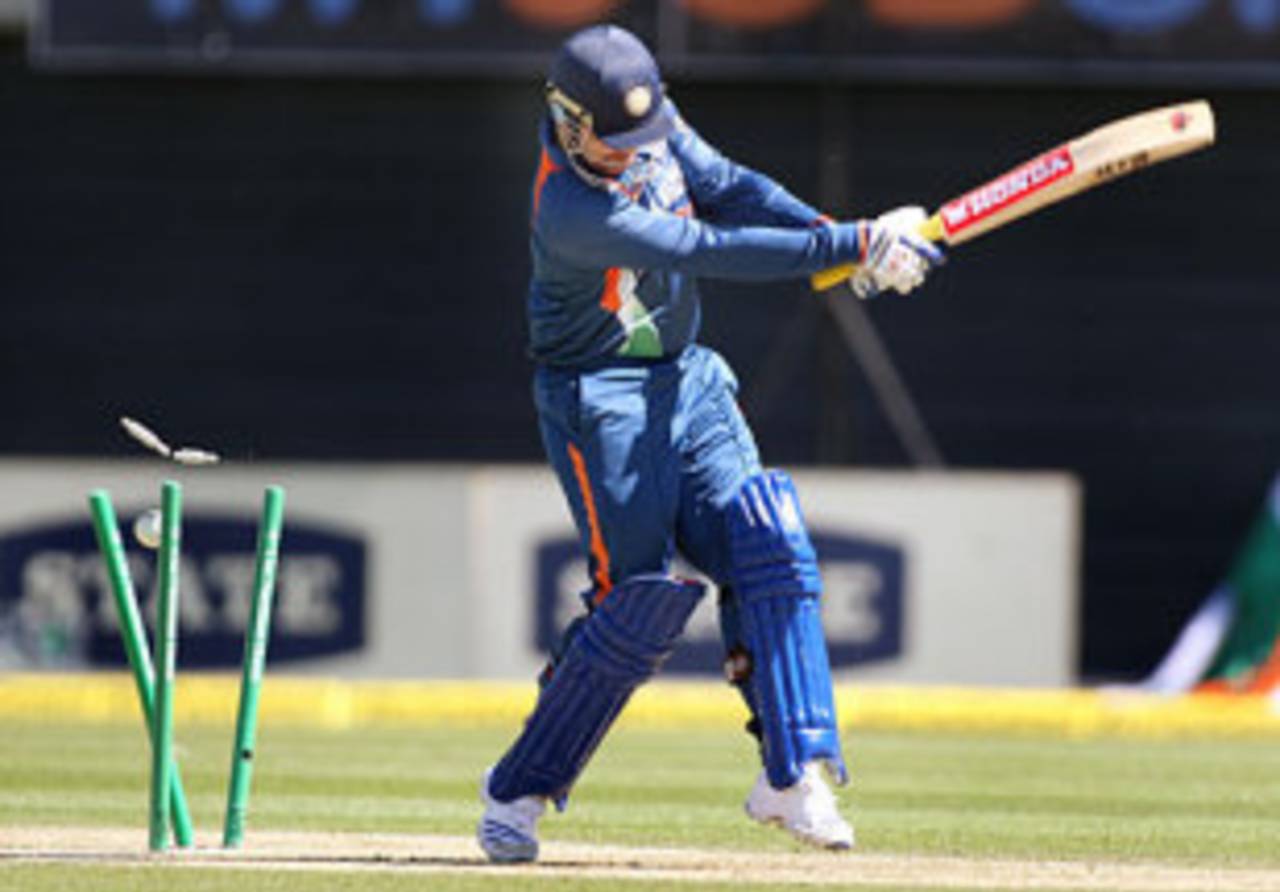Sample this: Lasith Malinga bowls a barrage of well-directed bouncers, Virender Sehwag looks right through and refuses to bite. He either ducks or simply moves away from the line almost every single time. Malinga keeps him quiet for a few deliveries but Viru persists and rejects the temptation to go for the kill, instead waits patiently for the ball to pitch in his area of dominance. And just when the moment arrives, he abandons restrain and flings the ball in style. He does so not because he has played a few dot balls but because the ball ought to be hit and he obliges. That's Virender Sehwag for you in Test cricket.
Change the colour of the ball from red to white, the clothing from white to blue, and Sehwag would not only bite but might also succumb in the process. Viru boasts of scoring a mammoth 7000 runs in both Test and ODI cricket, yet his lack of consistency in the shorter format continues to be a bane. Ironically, though, his batting seems to be tailor-made for the slam-bang shorter format. So, what's the logic behind such patchy performances in ODIs?
Lets first make sense of what makes Viru tick in the longer format, because it is the exact opposite of this that somewhat explains his instability in the shorter formats. Sehwag's game is built around hitting boundaries for he's definitely not one who'd happily rotate strike for a few overs without finding the fence. Regardless of however defensive the fielding captain is, it's imperative to start with attacking field positions which means all bad balls and good shots reach the fence. Contrary to the popular belief that Sehwag follows the simple formula of seeing-and-hitting, in Test cricket, he not only has a specific plan but also the discipline to follow it to the T.
Delhi had lost an early wicket in an inconsequential Ranji trophy game against minnows Orissa. The track was wet and had plenty in it for the quick bowlers. In came Viru, he danced down the track and played a wild slog, missing the ball by a mile. I, at the other end, went down to reason it out with him. To my utter disbelief he said he'd missed the ball on purpose because the chances of connecting cleanly were minimal. Instead, he wanted the bowler to pitch it short the following delivery. The bowler fell for it, obliged and Viru smashed him for four. That incident, followed by quite a few like it, gave me an insight into Viru's mind. After all, he doesn't keep it as simple as it looks, at least not at the planning level.
But an inverse logic is brought into action every time Sehwag goes for an outing in the shorter format. He doesn't have the same planning in place or the patience to follow it, for he believes that it's almost mandatory to up the ante all the time. Even if he's already hit two fours in an over, he believes he must go for the third one. His success in Test cricket lies in choosing the right balls to hit, and not in hitting every single ball, which he tries to do in an ODI. He plays shots like the pull and hook, which don't come naturally to him. He would take the aerial route not because it was the need of the hour but because that's what you must do in shorter formats, or so he feels. Little does he realise that if you're already driving at 150kmph, there's only so much faster you can go and be safe. If you're driving in the fifth gear, you must be ready to apply the brakes. And regardless of the format, Sehwag always bats in the fifth gear with the only option of slowing down available to him.
The shots which find the boundary ropes in Test cricket don't reach the fence in the shorter format due to defensive field placements and that, perhaps, forces him to raise the bar even further. Whatever the reason for his not climbing the summit in the shorter formats, he must find a way out of it. For the average of less than 34 in ODIs doesn't do justice to the talent this man possesses.
